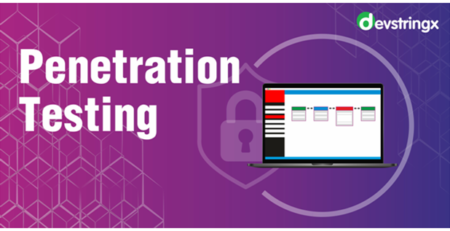Gorilla Testing: Definition, Features, Advantages, Disadvantages – DS
Are you tired of the same old testing methods that seem to miss out on essential bugs? Look no further than gorilla testing! This unique approach to software testing focuses on the most critical areas, simulating real-life scenarios and identifying potential issues before they become significant problems.
What is Gorilla Testing?
Gorilla testing is a software testing technique that focuses on identifying critical bugs by testing specific areas or modules of an application. Unlike traditional testing methods, gorilla testing prioritizes the most essential features and functionalities to ensure they work as intended.
The name “gorilla” comes from the idea that this type of testing is like a big and powerful animal that can find even the most minor bugs in an application. Gorilla testers usually have extensive knowledge about the system under test, allowing them to create realistic scenarios where they intentionally try to break or stress-test certain functionalities.
This approach is beneficial when time is limited, or budgets are tight, as it allows for more targeted and efficient testing. However, it’s important to note that gorilla testing shouldn’t replace other types of tests altogether – it should use in conjunction with other techniques like functional and regression tests.
Gorilla testing has become increasingly popular among software development teams looking for a more focused way to identify critical issues early in development. It is known as Torture testing or Fault Tolerance testing.
Features of Gorilla Testing
Gorilla Testing is a testing strategy that focuses on testing specific features or functionalities of an application. Here are some parts of Gorilla Testing:
-
Targeted Approach
Gorilla Testing targets specific areas of the application where issues are more likely to occur. This approach allows for thorough testing and identification of bugs or defects.
-
Timesaving
Since Gorilla Testing only focuses on specific areas, it saves time compared to other types of testing that require extensive coverage across the entire application.
-
Cost-Effective
As testers only need to focus on specific areas, this can lead to cost savings in terms of resources required for testing.
-
Flexibility
Gorilla Testing can be performed at any stage in the software development lifecycle, whether during unit or integration testing.
-
Informal Style
The informal style means testers don’t have to follow strict test plans and scripts like with traditional methods such as regression testing.
These features make Gorilla Testing an efficient and effective way to identify potential issues within applications while saving time and money.
Good to Read:- What Is Sanity Testing With an Example?
Advantages of Gorilla Testing
Gorilla Testing is a highly beneficial testing approach that can save time and effort while increasing the software product’s quality. The numerous advantages of Gorilla Testing, make it an attractive option for many organizations.
1) Quickly Identify Critical Defects
One of the most significant benefits of Gorilla Testing is its ability to identify critical defects quickly. This type of testing focuses on areas or functionalities most vulnerable to faults, allowing testers to uncover issues before they become more significant problems.
2) Cost-Effectiveness
Another advantage of Gorilla Testing is its cost-effectiveness. Since this method only concentrates on high-risk areas, less time and resources are required than traditional comprehensive testing methods. As a result, teams can allocate their budget more efficiently by focusing on key features or functionality and reducing unnecessary expenses.
3) Enhance Test Coverage
Moreover, Gorilla Testing enhances overall test coverage by targeting high-impact areas. By doing so, testers can detect bugs in important parts much faster than when using other testing approaches that might overlook these critical components entirely.
4) Less Preparation Work
Since Gorilla Testing requires less preparation work than other techniques, such as regression testing or end-to-end testing, companies could perform tests frequently without drastically slowing down development timelines.
5) Agile and Responsive Delivering
Leveraging the benefits of gorilla testing can help businesses be agile and responsive in delivering quality software products while saving costs involved in extensive manual or automation tests covering every aspect with diminishing marginal returns over time.
Disadvantages of Gorilla Testing
While Gorilla Testing has many advantages, there are also some disadvantages.
1) Time-Consuming
One of the most significant drawbacks is that it can be time-consuming. This is because testers need to have a deep understanding of the application under test to identify critical areas for testing.
2) Can’t Cover All Scenarios
Another disadvantage of Gorilla Testing is that it may not cover all possible scenarios or edge cases. Since the focus is on testing specific areas, other potential issues may be missed during this process.
3) Complacency Among Testers
Additionally, relying solely on Gorilla Testing can lead to complacency among testers who may think they have thoroughly tested the application when important areas could still be overlooked.
4) Can’t Solely Rely
Gorilla Testing should only use in conjunction with other types of testing, such as unit tests and integration tests. Relying solely on this type of testing can result in overlooking crucial defects that would otherwise have been identified through comprehensive testing methods
While there are certainly benefits to using Gorilla Testing as part of an overall software development strategy, it’s important not to rely exclusively on this method and consider its limitations carefully before implementing it into your workflow.
Good to Read:- What Is Smoke Testing in Software Testing?
When to Use Gorilla Testing
When to use Gorilla Testing? This is a question that every software testing team should ask themselves before implementing this type of testing. Gorilla Testing can use in various scenarios, depending on the project requirements and objectives.
- Gorilla Testing can use when there are time constraints in the project schedule. It allows testers to focus on critical areas or features of an application instead of spending time executing a full suite of tests. This approach is beneficial when working with limited resources or tight deadlines.
- Gorilla Testing is ideal for testing specific functionalities within an application. For example, if you want to try how well your login page performs under high-traffic conditions or check the functionality of your shopping cart feature under certain circumstances, then this type of testing would be appropriate.
- It’s useful when conducting exploratory testing sessions as part of continuous improvement efforts since gorilla tests often uncover issues that may have gone unnoticed during other types of tests.
Teams can also consider using Gorilla Testing after all other types have been completed as a final “sanity check” before launching their products into production environments.
Conclusion
In conclusion, Gorilla Testing offers a unique and targeted approach to software testing, focusing on specific areas or functionalities of an application. It has several advantages, including the ability to quickly identify critical defects, cost-effectiveness, increased test coverage, and flexibility in its application. However, it also has limitations, such as potential time and cost implications, limited range of all scenarios, and the risk of complacency among testers.
It should use in conjunction with other testing methods to ensure comprehensive coverage and mitigate these disadvantages. Ultimately, the decision to use Gorilla Testing should be based on project requirements, time constraints, and the specific objectives of the testing process.
Hire India’s Top-Rated Software Test Engineers to Keep Ensure the Functionality of Your Product. Drop Your Query & Schedule A Free Consultation Call with Your Experts.














